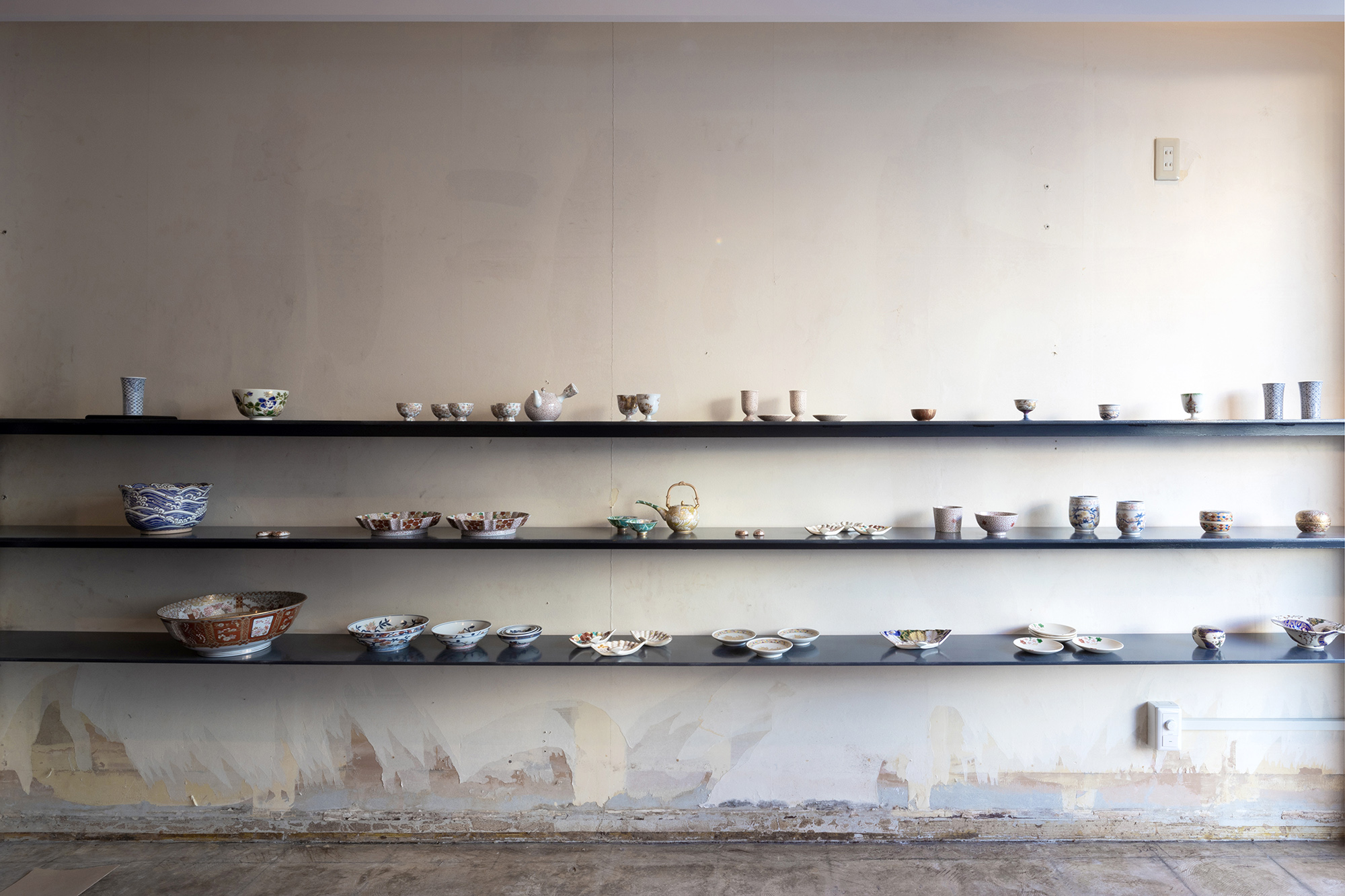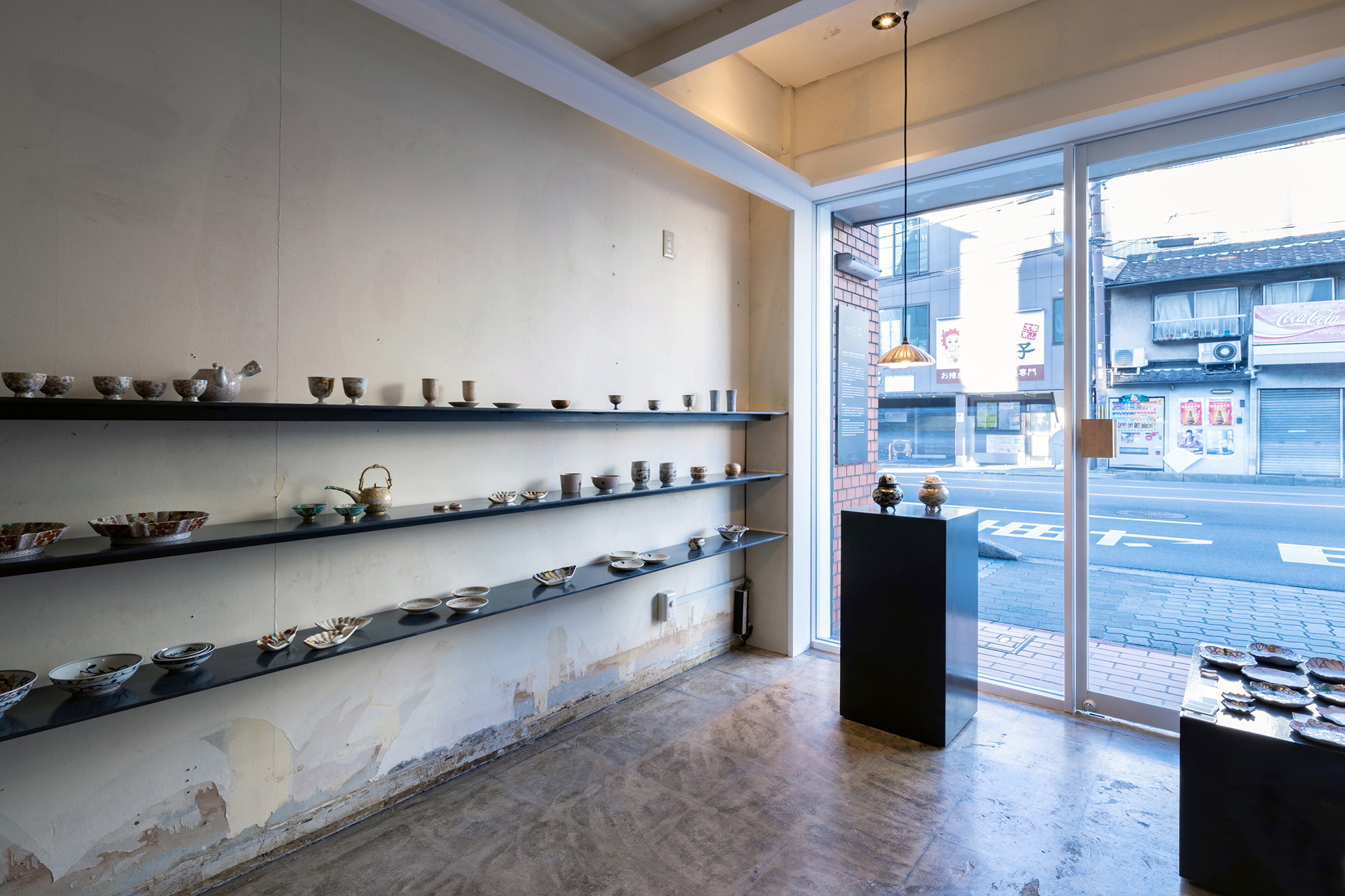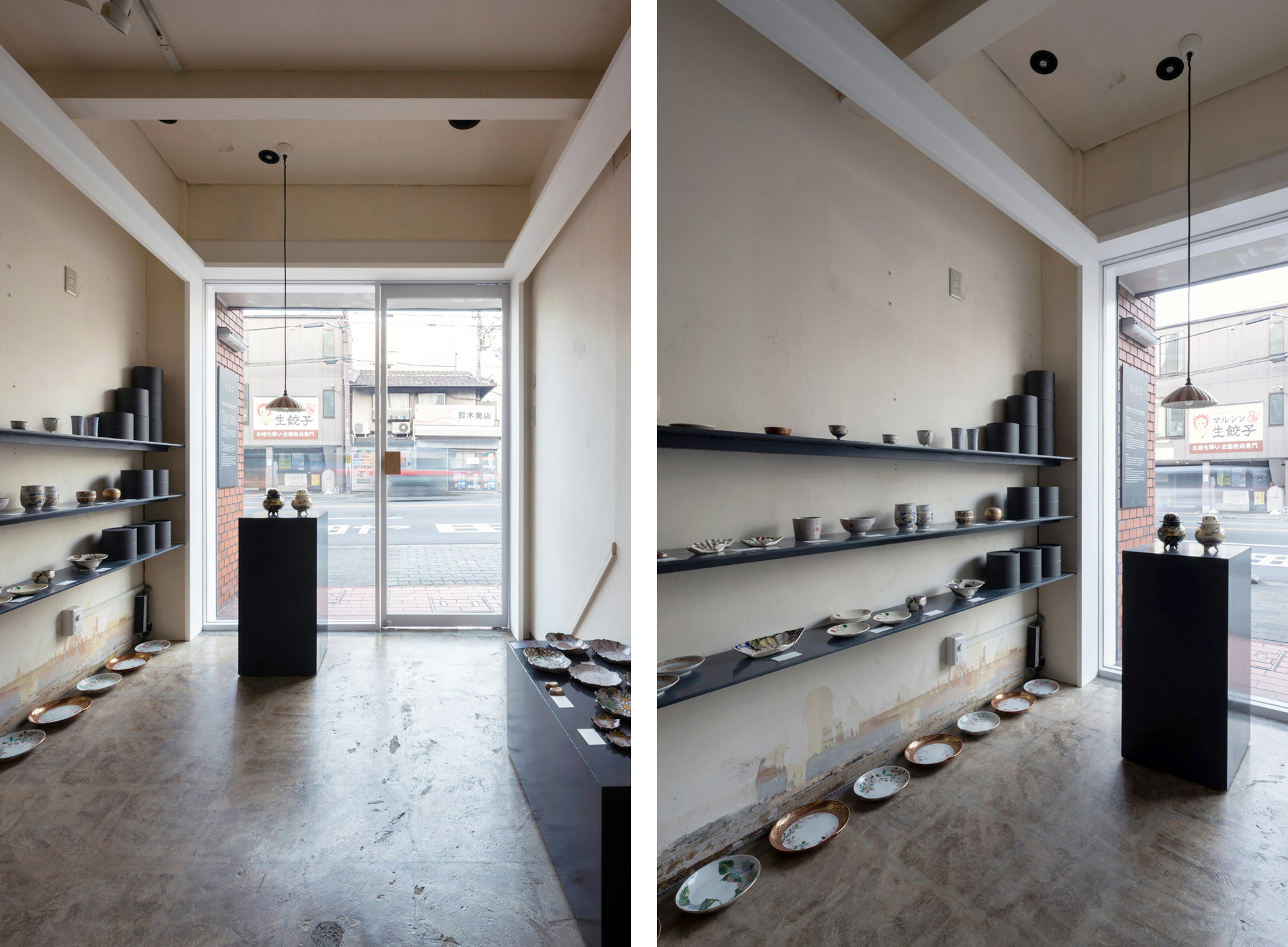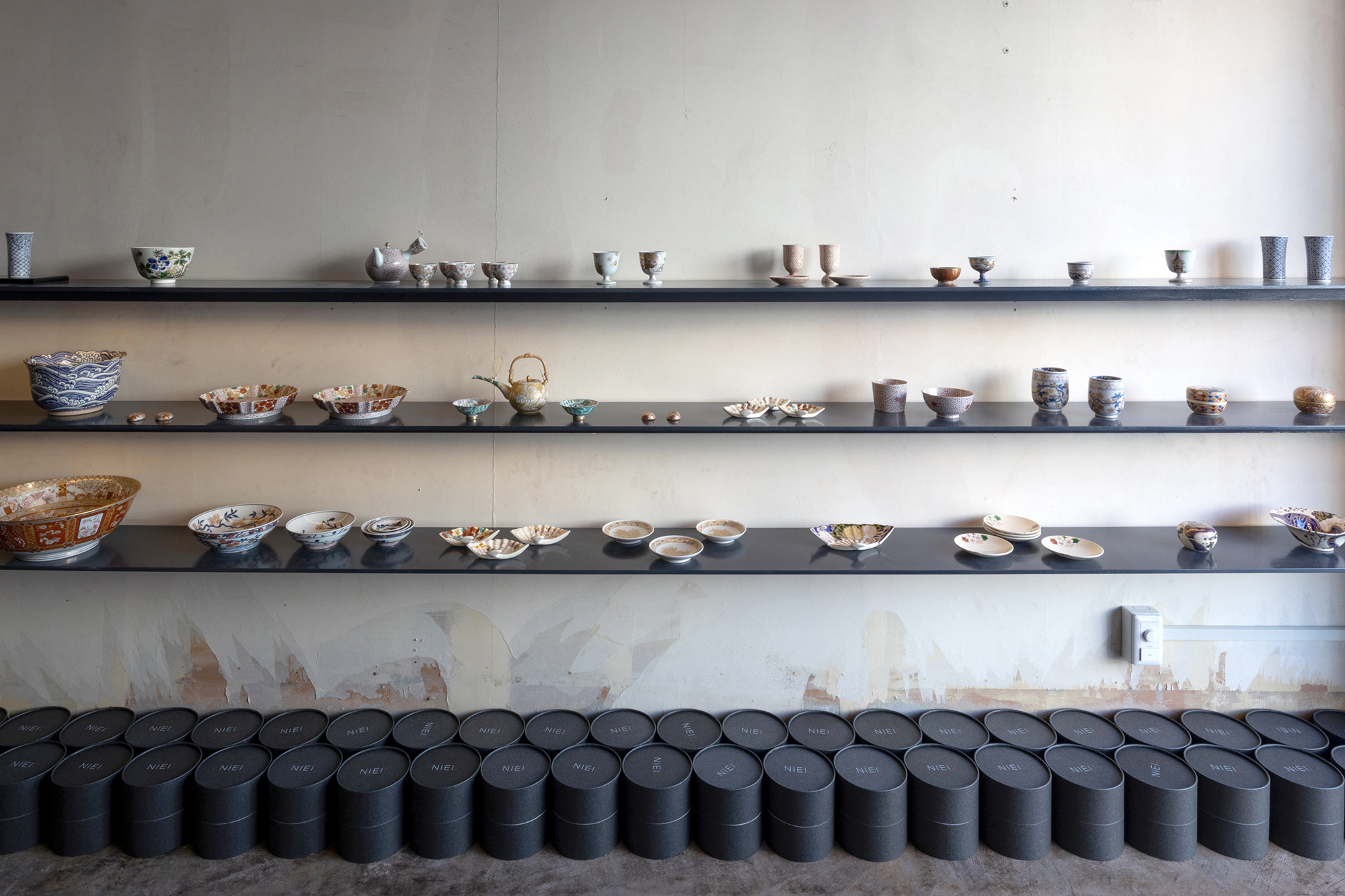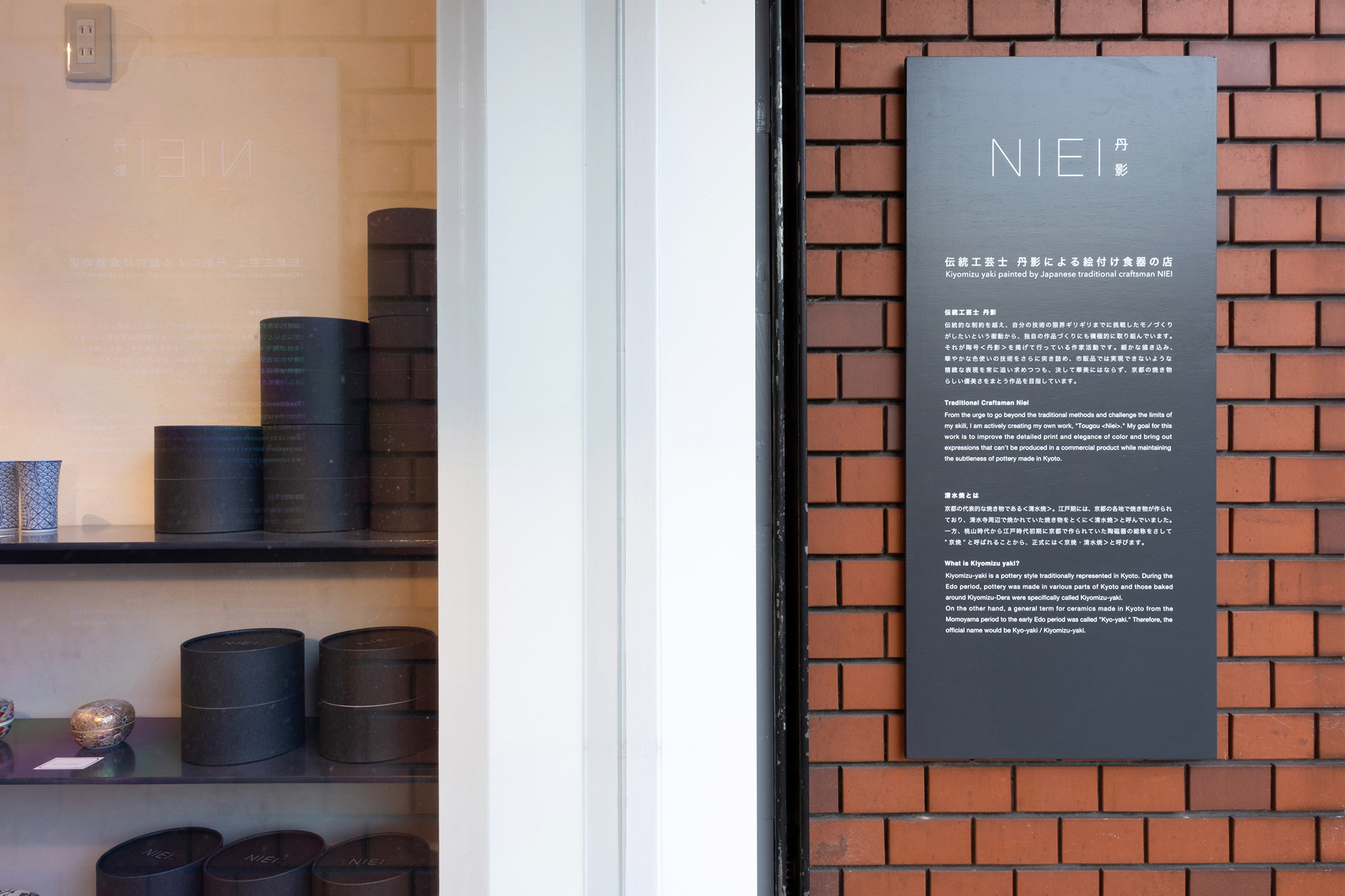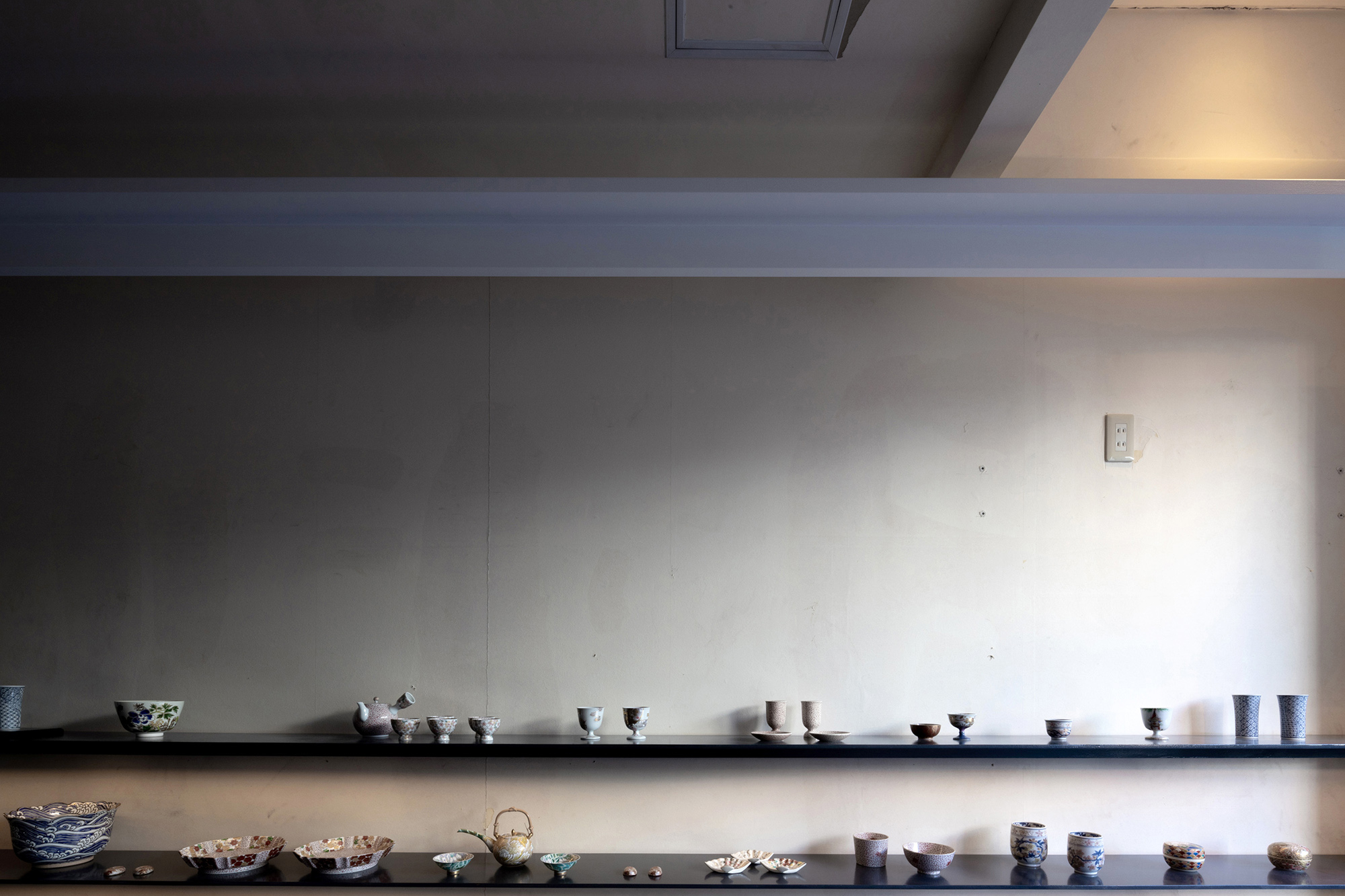NIEI
2021|Shop, Studio|清水焼の絵付け食器を販売する伝統工芸士 丹影さんのお店
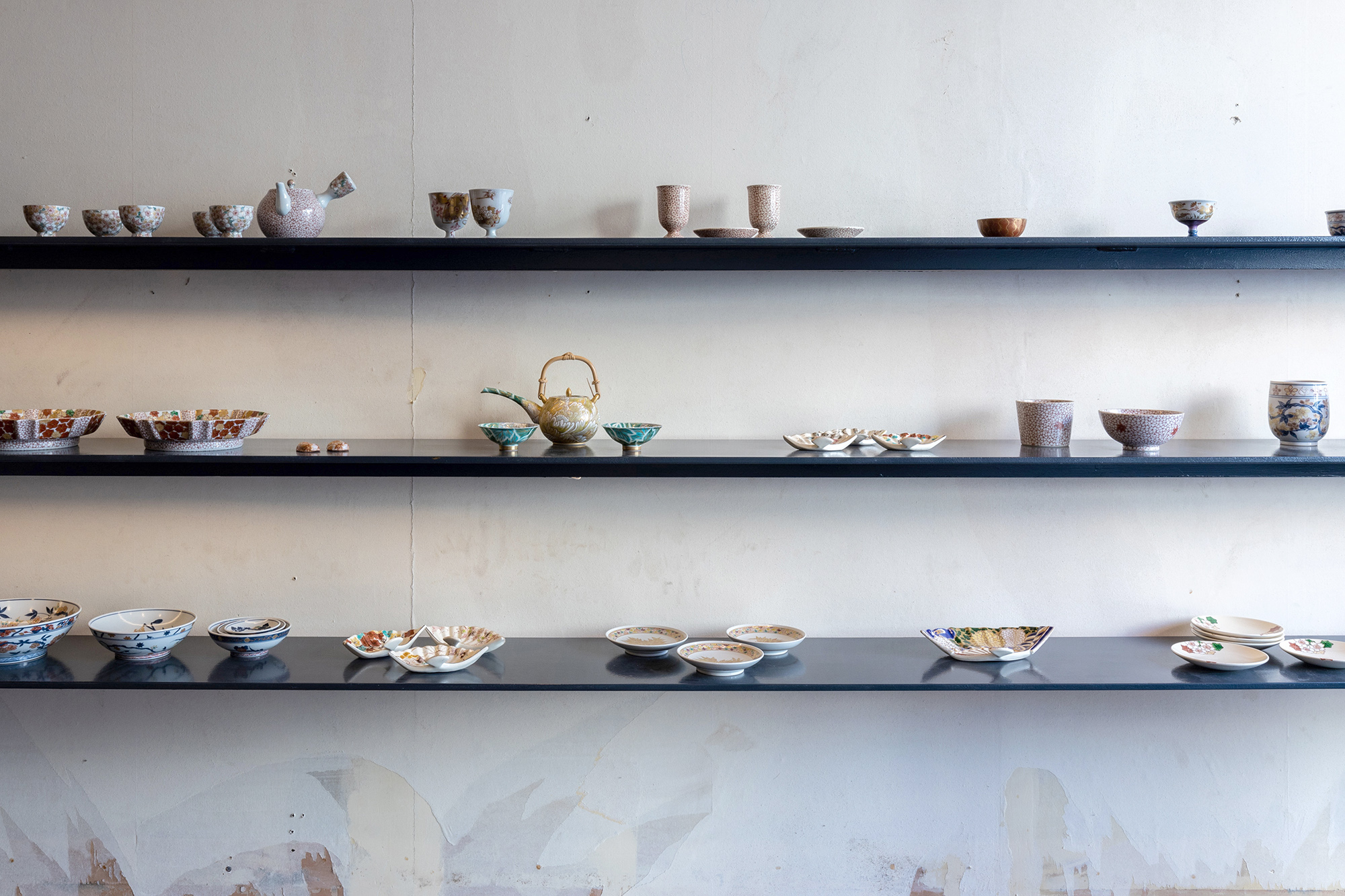
絵付師である丹影(陶号)さんが作品を制作し、販売する空間の設計を行った。
丹影さんは伝統工芸士として、高度な技術を受け継ぎ、技法を後世に伝える活動を行うと同時に、
独自の表現を追求した作品制作を行い、高い評価を受けている。
日常を彩る親しみやすいものや、伝承による型を重んじたもの、そして、伝統技法を柱にしながらも作家個人の世界観を投影したものなど、多様な作品が制作されているが、この店舗では、その中でも作家の独創性が強く現れているものに絞って販売を行うことになった。
私たちは、もともと工房と店舗であった空間を、機能はそのままに、作品を客人に見せるにふさわしい設えに改修する計画を立て、設計監理を行った。
改修前の内装は、フローリングとビニルクロスで覆われた一般的なもので、ファサードにはやや無骨な木製の框戸が設置されていた。丹影さんの極めて緻密で華やかな作品を置くには、心地よい緊張感が足りていないと感じられた。
この不調和を、最小限の操作と投資で調整するために、改修する対象を細やかに吟味した。
まず、既存の床材とビニルクロスを剥ぎ取り、偶発的に痕や斑が現れた床や壁の質感を、侘びた風情として受け入れた。彩度が低く、狭い階調と荒い質感を持った背景は、鮮やかで、豊かな階調と細やかな表情を持った器を対比的に浮かび上がらせる。内装材が剥ぎ取られた空間が、ただの解体現場に見えないように調子を整えるため、また、器が置かれる場の閾としての意味合いを持たせるため、柱梁フレーム状の新たな要素を配置した。フレームは外部のファサードまで伸長させ、既存木製建具は強化ガラスドアに入れ替えた。重鈍な框ドアは避けたかったが、強化ガラス切りっ放しのような工業製品的なシャープさもまた、この店舗に似つかわしくないと思われ、強度上は不要なスレンダーな框を設け、葉書サイズの木製の取っ手を付けた。
器を置く棚は、厚み9mmの(幅250mm)スチールのフラットバー4mを両端で固定したものとしている。間接照明カバーも兼ねた12x30mmのフラットバーを板裏に2本溶接して、たわみを許容範囲に抑えている。展示台の上方に吊り下げたペンダントライトのシェードには絵付けをしてもらい、光を包む器と光を受ける器が呼応するようにした。
7畳ほどの空間を、丹影さんや大工さんたち、協働のコウジンデザインの小川さんと様々なアイデアを出しながら作っていった。
たまたま大工さんの奥さんが以前店舗で働いていたり、エントランス建具の改修に伴う床のモルタル補修では、左官屋さんがいつのまにかモルタルにレンガと続く目地を入れてくださっていたり、オープニングレセプションでは小川さんが料理を作ったりと、様々なご縁や関係性がうまくはたらき、非常に楽しい現場だった。
- 所在地
- 京都市東山区
- 主用途
- 物販店・工房
- 規模
- 改修部分床面積11.50㎡
- 協働
- コウジンデザイン
- 施工
- 株式会社 再京建設
- パッケージ製作
- BOX&NEEDLE
- 写真
- 牧野研造建築設計事務所
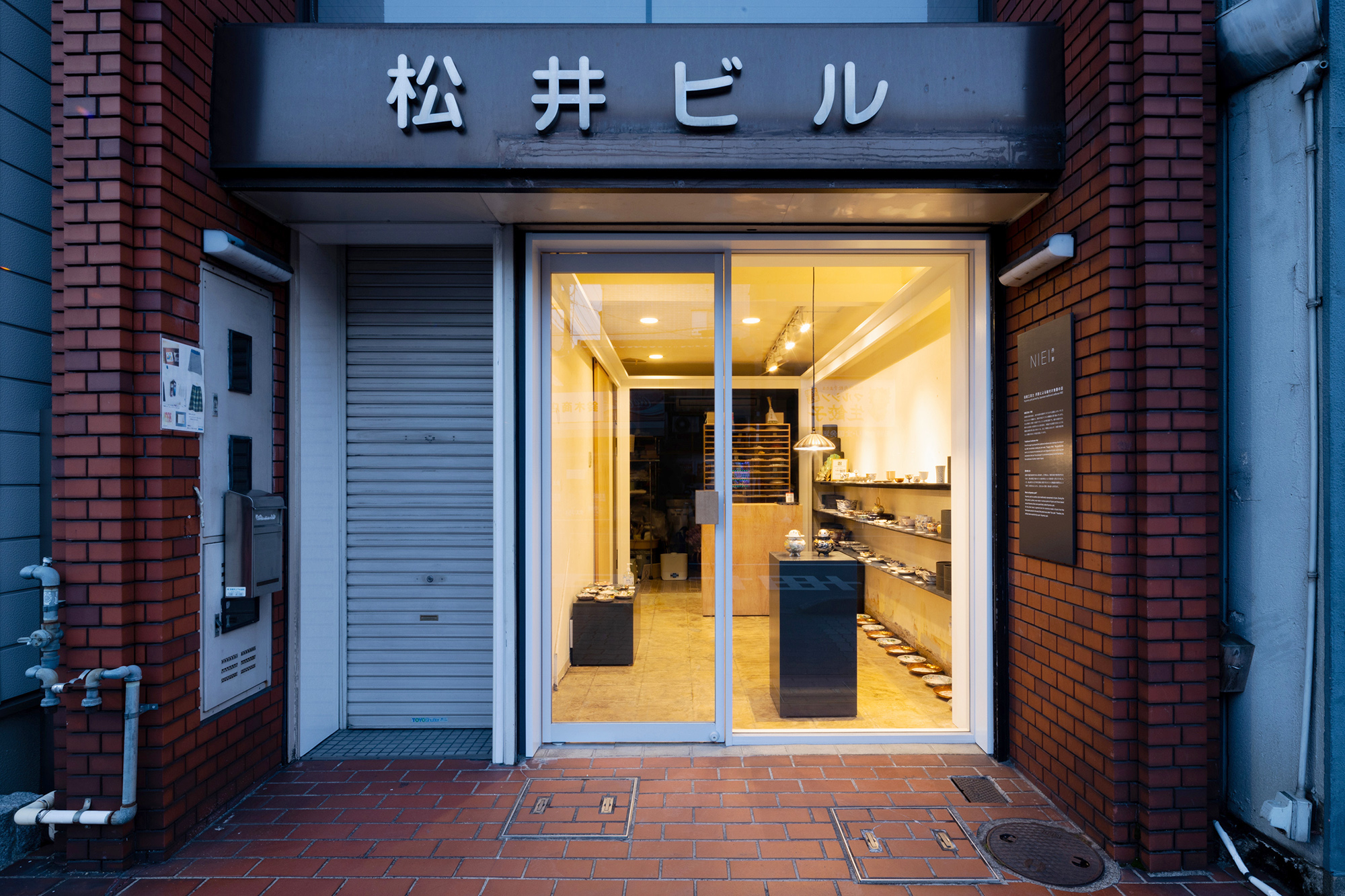
NIEI is a porcelain store with a workshop where Niei (ceramist name) paints his Kiyomizu-Yaki-style ceramic works.
As a traditional craftsman, Niei inherits advanced techniques and works to pass on the techniques to future generations. On the other hand, she pursues her own unique expression in her work, which has been highly acclaimed.
She produces a wide variety of works, including pieces that add color to everyday life, pieces that emphasize traditional forms, and pieces that project the artist's personal worldview while using traditional techniques as the mainstay of his work. In this store, he focuses on those pieces that strongly express the artist's uniqueness.
We planned and executed its renovation to create a setting suitable for showing the artwork to guests, without changing its function as a store and workshop.
Prior to the renovation, the interior had typical flooring and wallpaper, and a rather large wooden stile and rail door on the facade. It seemed there was not enough comfortable tension to place Niai's very delicate and elegant works of art. In order to reconcile this incongruity with minimal manipulation and investment, the objects to be renovated were examined in detail.
First, the existing flooring and wallpaper were stripped away, and the texture of the underlying floor and walls, with their accidental marks and flecks, was embraced as a wabi-like texture. Such background, with its low saturation, narrow tonality, and rough texture, contrasted with her works; the vivid, richly toned and finely textured vessels. The only new element, post-and-beam frame is added to the entire space, so that the space does not look like a mere demolition site, and that it shows a threshold where the vessels are exhibited.
The frame was extended to the exterior façade, and the existing wooden fittings were replaced with tempered glass doors. We wanted to avoid a heavy framed door, but the industrial sharpness of the tempered glass cut-outs also seemed out of place in this storefront.
The frame is extended to the exterior façade, replacing the existing wooden door frames. The glass pane is outlined with a slim frame, which is not necessary for its structure, with a postcard-size wooden handle attached to it. We would rather do so as neither existing bold wooden frame nor frameless tempered glass, which looks too industrial, seems to suit this store.
The shelves for exhibiting the vessels are made of 4m thick (250mm wide) steel flat bars, 9mm thick, fixed at both ends. Two 12x30mm flat bars, which also serve as indirect lighting covers, are welded to the back of the boards to keep deflection to an acceptable level. The shade of the pendant light suspended above the exhibition stand was painted so that the vessel that envelops the light and the vessel that receives the light correspond to each other.
This small space (11.5m2 ca. 7 Tatamimat size) was created in collaboration with Niei, carpenters, and Ogawa of Koujin Design, while exchanging different ideas with each other.
A number of fortunate connections and relationships worked well together: The carpenter's wife happened to have worked at the store before, a plasterer somehow managed to put bricks and joints in the mortar to repair the flooring for the entrance fixtures, and Ogawa served food at the opening reception.
It was such a pleasant working session.
translated by Tota Goya
